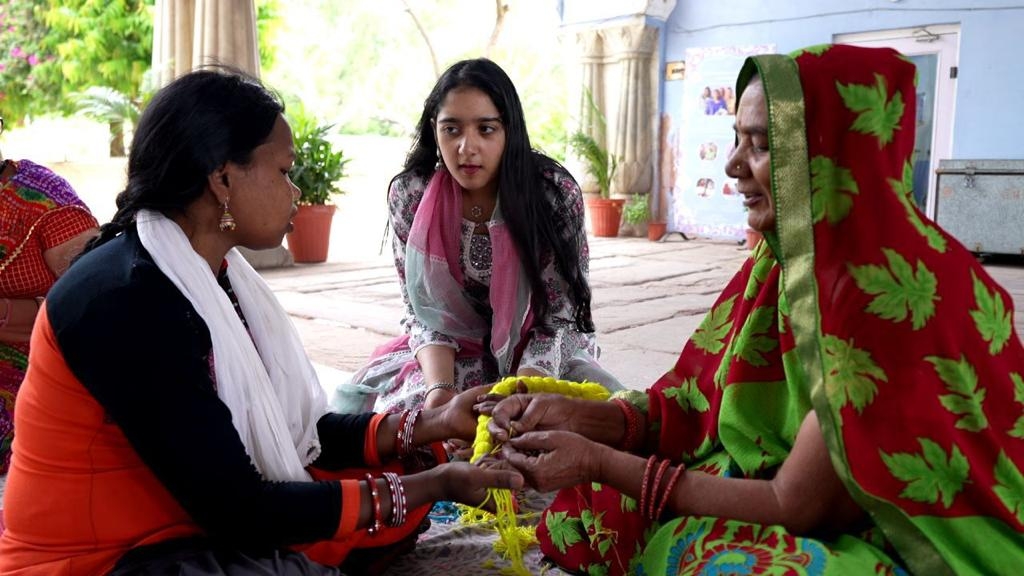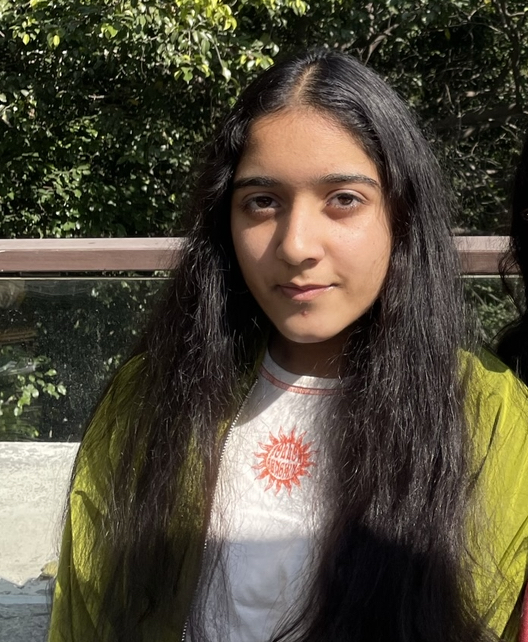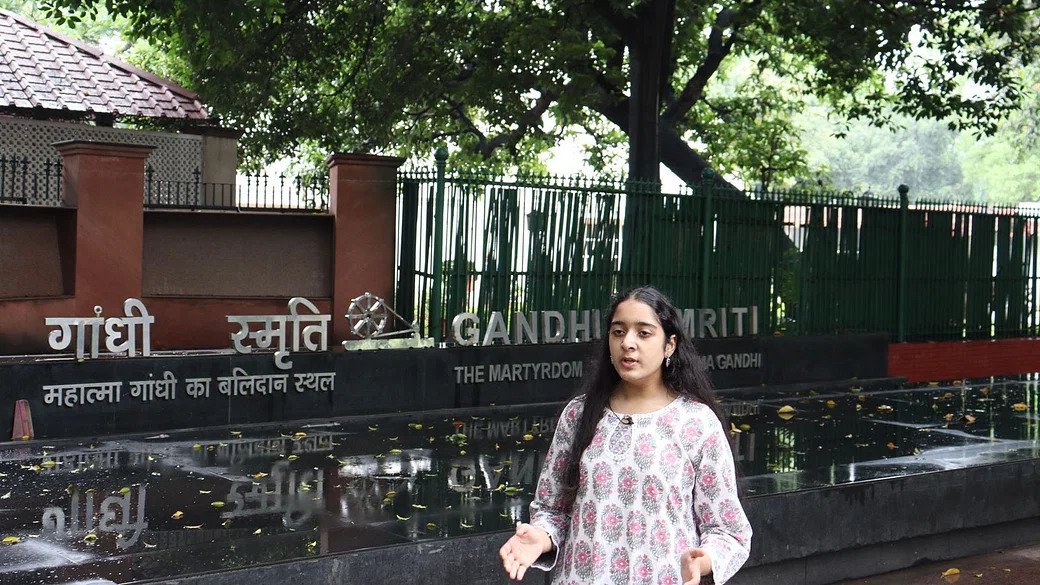(September 22, 2023) “Filigree artisans sell biscuits to make ends meet.” A headline in a leading newspaper in 2020 that lingered on Rhea Bakshi’s mind for a long time. Her quest to revive the dying form of fading intricate silver jewelry metalwork led her to the bylanes of a village in Jharkhand in 2023, where currently the delicate art of filigree is kept alive by only two or three dedicated families. Here she met Avinash, a filigree artisan from Khunti, who revealed next generation’s little interest in mastering the art form, owing to meagre income prospects. “Being the oldest and most intricate form of jewelry making, the craft is time consuming and often requires precision and immense skill. However, it doesn’t pay much. Hence, not many youngsters are keen to take up the profession,” Avinash reveals in India’s Treasures, a documentary by the 17-year-old Rhea on Indian artisans. This August, the documentary won big at the New York International Film Awards, in the best student film category, making it the only Indian film to be awarded the finalist laurel. “The recognition validated the work that I had put in, and, also stood for the fact that age doesn’t limit a person’s ability to make a meaningful impact,” Rhea tells Global Indian.
The 20-minute documentary delves into the captivating journey of India’s age-old traditional art forms, especially silver jewelry, and the lives and struggles of Indian artisans. From the back alleys of Jaipur that house artisans to the village of Jharkhand that’s home to one of the oldest metalwork, India’s Treasures showcases the passion and struggles of artisans who are preserving India’s heritage. Be it the art of Meenakari from Jaipur or Jharkhand’s filigree, artisans are taking forward the traditional artforms, many of which are fading away. One such is filigree – Introduced in the state of Odhisa by the Mughals during their regime, the intricate metalwork using silver wires is elaborate and requires precision and skilled hardwork. Later, it found its way to Jharkhand where delicate earrings in filigree are worn by the Senthal women.

Rhea Bakshi with artisans
With the documentary getting a nod at an international film festival, Rhea calls it a “great opportunity for the artisans who have now taken the centrestage due to the popularity of the documentary.” She adds, “Through the documentary, I am trying to provide a platform for the voices of marginalised India and the people who are the real heroes of the time-honoured traditions and expertise.”
Passion for tradition and love for the art
The Delhi-based teenager, who has roots in Rajasthan, often visited her grandmother in Jaipur while growing up. “I saw silver jewelry all around me.” Inspired by PM Modi’s vision of inclusive economic growth, Rhea was keen to learn about the artisans making the silver jewelry that she adores. “We don’t understand the effort that these artisans put into making a product,” says the Class 12 student. She began her research on the artisans, and even produced a research paper, but realised it wasn’t enough to create an impact. “I had a passion for storytelling, and thought that I should create a story, and what better way than digital media to spread maximum awareness.”
Her grandparents played an instrumental role in shaping her experiences. Growing up, Rhea heard innumerable stories about her grandmom’s childhood in Jaipur. “She brought Jaipur alive in her stories. Even my grandfather had the power to make the most ordinary walks feel like an expedition. Moreover, in school, I inculcated the value of having pride in one’s heritage.” Having grown up around art and culture, Rhea says that she became sensitive towards the protection of art as she believes that’s what makes India unique.


Research and its many revelations
It was in December 2022 that Rhea began researching the subject, and the many trips to Jaipur, Jharkhand, and UP were nothing short of a revelation. Peeking into the lives of the artisans and learning about their passion for the artwork and their struggles, Rhea was determined to bring their stories to the world. One such story is of Nazneen, who along with her husband moved to Jaipur from Meerut in search of a better life. “I was surprised to hear that she earns ₹250 per day for making bangles and made me wonder if that’s the amount that someone should get for putting in so much effort. That’s $3 a day for spending eight hours on a piece of jewelry. Moreover, the piece will be further bargained in the marketplace and the recognition gets lost. I wanted to make people aware of the struggles of the Indian artisans and although the world is moving towards modernisation, this art form and the handicrafts of India hugely contribute to the GDP of India, and without them, we can’t move forward. That’s why inclusive economic growth comes in,” adds Rhea.
What surprised Rhea during her research was that many large firms creating artificial jewelry often make few changes to the design of the jewelry made by these artisans, thus making a new product altogether. “The original idea was that of a small-scale artisan who now gets no credit,” fumes Rhea, who was exasperated by the fact that there is no law to protect the artisans. “They are stealing small artisans’ designs!” However, she also found a silver lining in the e-commerce platforms that are helping these artisans put their work out for a larger audience. “It’s so heartening to see artisans making the effort of learning technology so that their art reaches the maximum people,” says The Sri Ram School student.


Large firms mostly make one design, and then mass produce it. However, Rhea explains that these artisans sit for hours every day to create exquisite pieces. While exploitation and low income exists, she is grateful that many customers are now becoming aware of the hard work behind the craft and not haggling with the artisans.
The motivation that kept her going
Intrigued to tell the story to a larger audience, Rhea understood that she needed to have the skill set to make this dream come true. It was YouTube that came to her rescue, and she spent hours on tutorials learning the art of filmmaking. “I would write the script and take opinions from my parents and friends who were my soundboard.” Being a 16-year-old, age worked as a double-edged sword, but she was determined to move past the challenges. “My motivation lay in the power to encourage thought and to initiate dialogue between people. I wanted to create a moment that will safeguard our artistic heritage and also propel it into a future where we can adapt, thrive and flourish,” she says, adding, “The profound motivation was woven by my grandmother’s deep-rooted connection to Jaipur and because she is my favourite person, I instantly possessed an enchanting bond with the city and the artform that transcended time and distance. I am sitting in Delhi; the art form is from Jaipur and was created hundreds of years ago. And it still really matters to me.”
Even when challenges arose, she kept her calm and continued because Rhea knew that her mission and vision were bigger than her, and it was the future of the artisans that was at stake. “I wanted to raise awareness about their plight and I knew I couldn’t go back on the promise of making their stories heard.”
The teenager, who has found her passion in music, astrophysics, and economics, is also an active member of Nai Disha, a Delhi-based NGO that works to provide education to underprivileged kids. “They believe in the principle that everyone should have access to quality education and equal opportunities, irrespective of their birth or social status. When I met the founder of Nai Disha, I was inspired by PM Modi’s vision of Girl Child Education, and I was motivated to utilise education to empower the poorer sections of the society, especially the girl children,” says the girl who wants to pursue economics and take her mission of inclusive economic growth forward.
India’s Treasures made it big at the New York International Film Festival, and Rhea wants her film to reach out to a larger audience. “If it gets selected in more film festivals, I’d be grateful that the message is spreading forward to other countries and they also appreciate the Indian art,” she signs off.
- Follow Rhea Bakshi on LinkedIn




